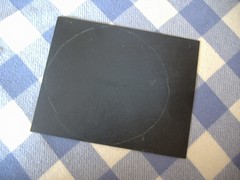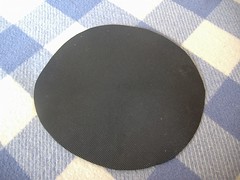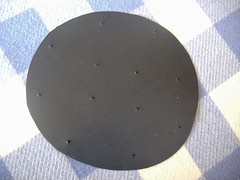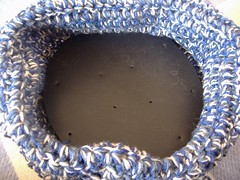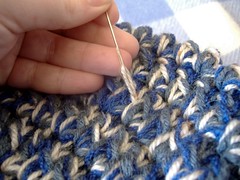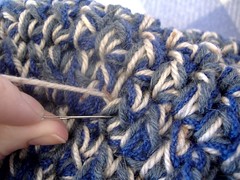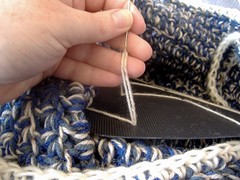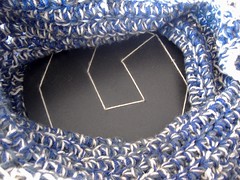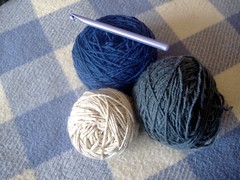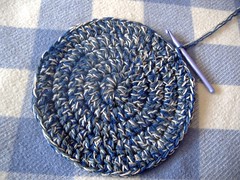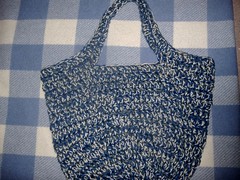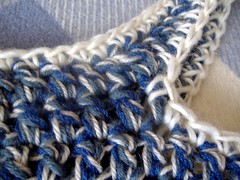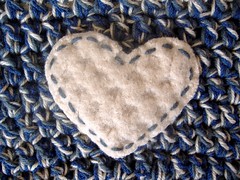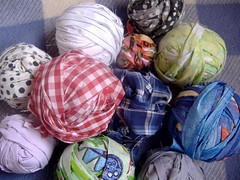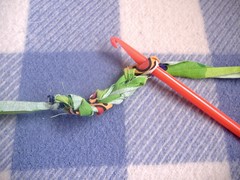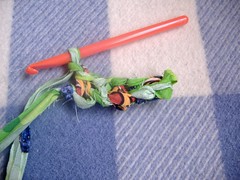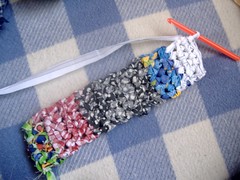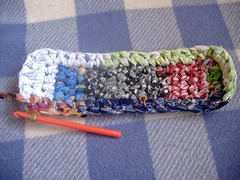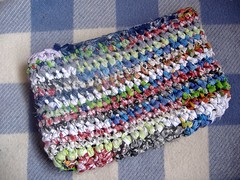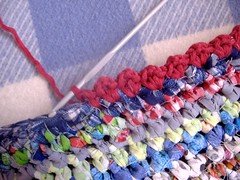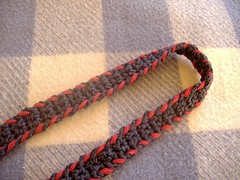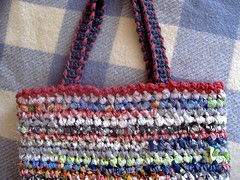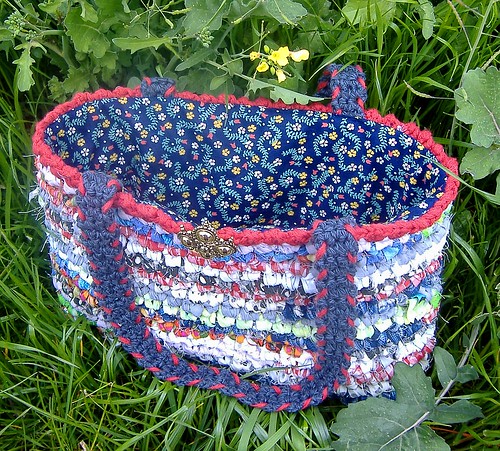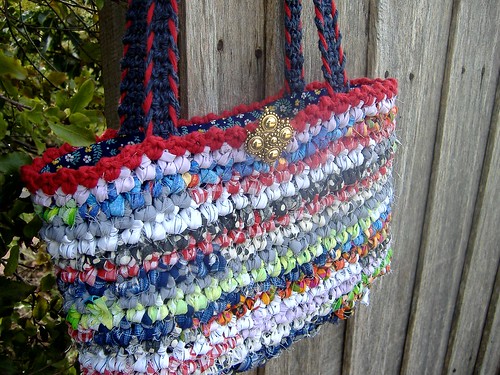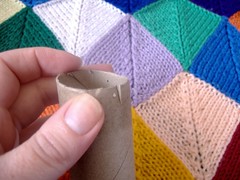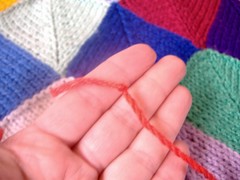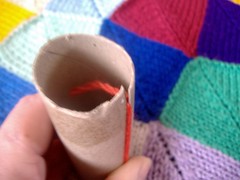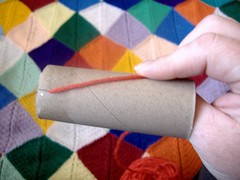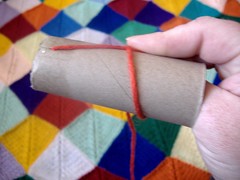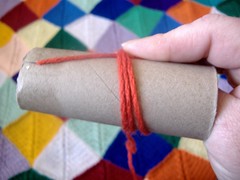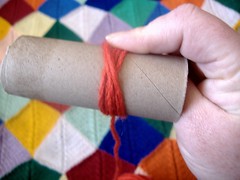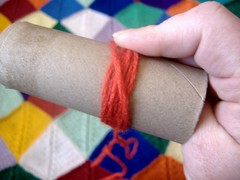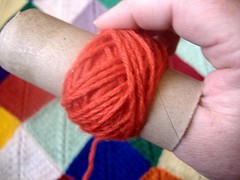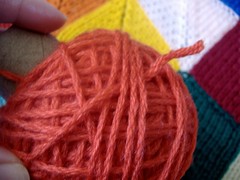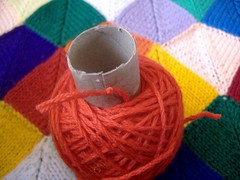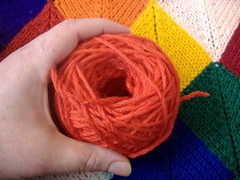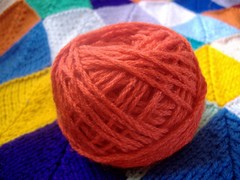I figure I will need a circle shape for the base, and a rectangle to go around the sides... and then somehow join the two together...

So when I was crocheting the bag, I used the circular base as a template for cutting the fabric. Just look at that beautifully ironed fabric, would you?
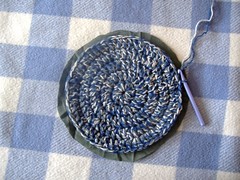
I left a small seam allowance around the edges.
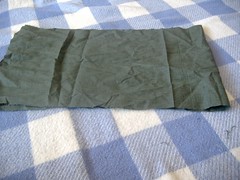
Here is my rectangle. It is a little taller than the bag, and twice as wide (plus a seam allowance)
Once again, it is beautifully ironed! Sorry mum
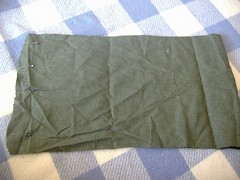

Hmmm. Can you see those pins down the left hand side there? I'm going to seam down that side to make a tube.
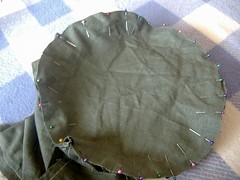
I've attached the circular base to the tube with pins.
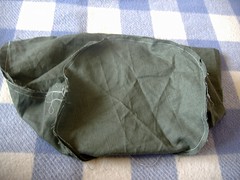
And then sewn it in place.

Top edge has been folded down and I have finally IRONED the lining. Here it is pinned in place ready to hand stitch.
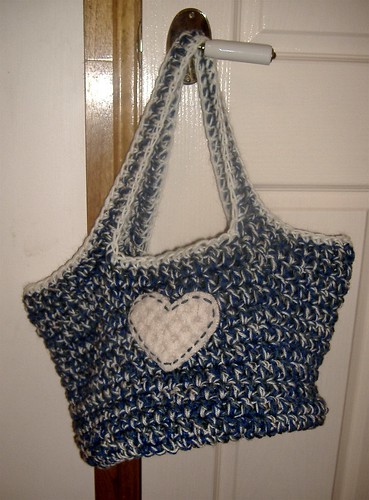
Uh-oh! YUK
Big problem here... that base I put in is horrendous! This photo doesn't quite depict how bad it is. Believe me... it is appalling!
It was supposed to help to give the bag some shape... a nicer shape... NOT A WORSE ONE.
The problem seems to be that it makes the bag so wide at the base, that the sides have to pull in too steeply. Which makes it look really weird and angular. Also, I had made the handles longer than the pattern called for, so that I could carry it over my shoulder... but then the base makes the bag stick out so far from your body that if feels ridiculous!!!!
My verdict? The idea of the base is great, and the technique works beautifully... but the base was inappropriate for this particular bag.
Time to remove the lining and the base... then stitch the lining back in again...
I'm taking a few deep breaths here... this task calls for patience...
click here to see the completed bag
